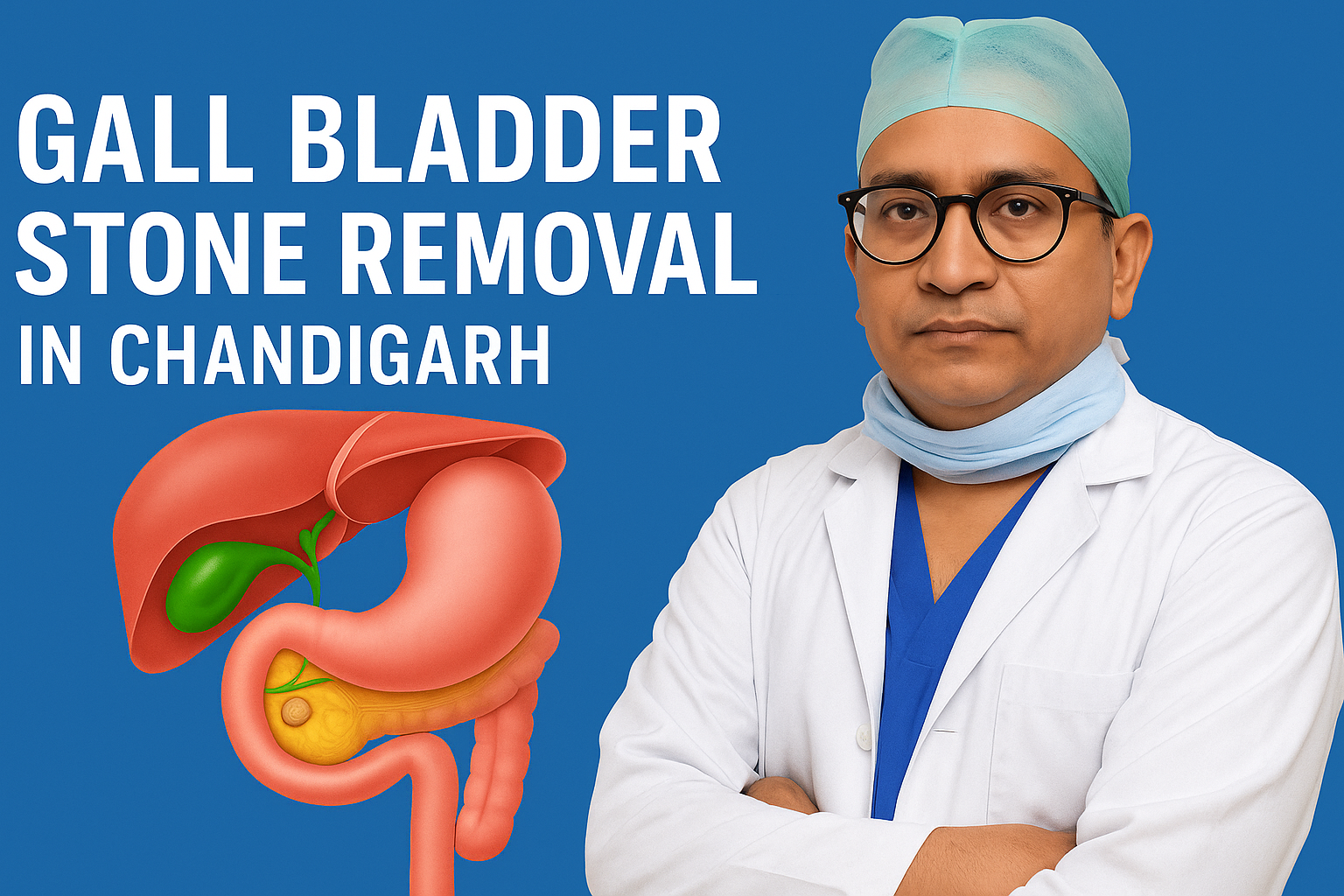About the Author
This article is authored by Dr. Pawan Kumar Bansal, a leading gastrointestinal and laparoscopic surgeon specializing in Gall Bladder Stone Removal in Chandigarh. With years of experience in advanced surgical care, he is known for his expertise in treating complex gallbladder conditions using minimally invasive techniques. Dr. Bansal’s patient-centered approach ensures safe, effective, and long-term solutions for those suffering from gallstones.
Introduction
Gallstones are a common digestive problem affecting millions of people worldwide. These hardened deposits, usually made of cholesterol or bile pigments, form inside the gallbladder—a small pear-shaped organ located beneath the liver. When these stones cause pain, nausea, or other complications, the treatment often involves gall bladder stone removal.
In this article, we will explore what gallbladder stone removal means, why it is necessary, the procedures available, recovery expectations, and lifestyle changes after treatment. We will also highlight the availability of advanced care for Gall Bladder Stone Removal in Chandigarh, where patients have access to expert surgeons and modern facilities.
What is Gall Bladder Stone Removal?
Gall bladder stone removal refers to medical or surgical treatments used to eliminate gallstones that block the bile ducts, cause gallbladder inflammation, or trigger severe abdominal pain. The procedure does not always focus on removing just the stones but, in most cases, involves removing the gallbladder itself (cholecystectomy).
Since the gallbladder is not an essential organ for digestion—its function of storing bile can be compensated by the liver and intestines—removing it is considered a safe and effective long-term solution.
Why is Gall Bladder Stone Removal Needed?
Not all gallstones require removal. Some people may live with gallstones without symptoms (called “silent stones”). However, when gallstones cause problems, removal becomes necessary. Common reasons include:
- Severe abdominal pain (biliary colic): Sharp pain in the upper right abdomen, often after fatty meals.
- Digestive problems: Nausea, vomiting, indigestion, or bloating.
- Inflammation (cholecystitis): Infection or swelling of the gallbladder.
- Jaundice or bile duct blockage: Stones blocking bile flow cause yellowing of skin and eyes.
- Pancreatitis: Stones can block the pancreatic duct, leading to life-threatening complications.
Without treatment, gallstones may lead to repeated infections, severe pain, and complications requiring emergency surgery.
Procedure to Remove Gall Stones
Different treatment methods are available depending on the type, size, and location of stones as well as the patient’s health condition. The most common approaches are:
1. Laparoscopic Cholecystectomy
- Minimally invasive “keyhole” surgery using small incisions.
- A laparoscope (tiny camera) guides the surgeon in removing the gallbladder.
- Fast recovery, minimal scarring, and patients can usually go home within 24 hours.
- This is the gold standard method worldwide.
2. Open Cholecystectomy
- Traditional surgery requiring a larger incision.
- Recommended when laparoscopy is not possible due to complications, infection, or very large stones.
- Requires a hospital stay of 4–5 days and recovery of 4–6 weeks.
3. Endoscopic Retrograde Cholangiopancreatography (ERCP)
- Used when stones are lodged in the bile duct.
- An endoscope is passed through the mouth to remove stones without abdominal surgery.
- Often combined with laparoscopic surgery.
4. Non-Surgical Treatments
- Oral dissolution therapy: Medications like ursodeoxycholic acid may dissolve small cholesterol stones but take months and often fail.
- Shock wave lithotripsy (ESWL): Rarely used; shock waves break stones into small fragments that pass naturally.
Recovery After Gall Bladder Stone Removal Surgery
Recovery depends on the type of procedure:
- Laparoscopic surgery: Patients usually resume normal activities within a week. Mild bloating or diarrhea may occur but improves with diet adjustments.
- Open surgery: Full recovery can take 4–6 weeks. Patients may need extra rest and follow-up care.
- ERCP: Recovery is usually quick, but patients may need monitoring for complications like pancreatitis.
Overall, most patients experience significant relief from pain and improved digestion after recovery.
Lifestyle After Gall Bladder Removal
Life without a gallbladder is generally normal, but some lifestyle changes help in smooth recovery and better digestion:
- Diet adjustments: Eat smaller, frequent meals and avoid excessive fatty or spicy foods.
- Stay hydrated: Drinking enough water aids digestion.
- Exercise regularly: Helps maintain weight and prevent digestive issues.
- Follow-up care: Regular checkups ensure no post-surgery complications.
Most patients adapt quickly, and digestion improves within weeks to months.


